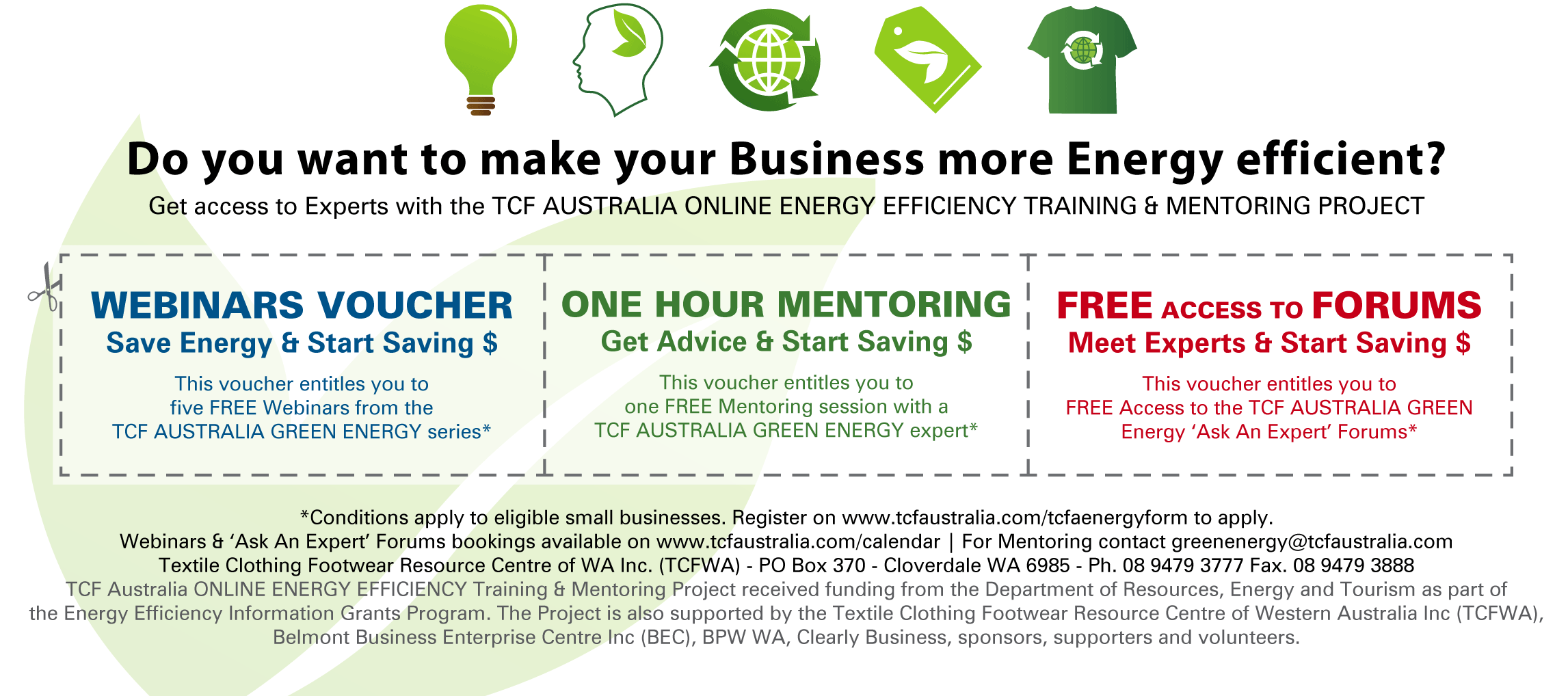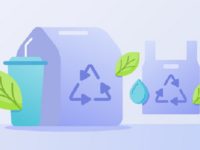Measuring energy use in your business
Improving energy efficiency is a central element of the Australian Government’s Clean Energy Future package – it can help businesses save money on their operating costs while also lowering Australia’s greenhouse-gas emissions.
As a result of the Federal Government’s commitment, the TCF Australia Online Energy Efficiency Training & Mentoring Project is able to offer an extensive range of specialist energy-efficiency services to small businesses in the fashion, textile, clothing, footwear, leather (TCF) creative, and associated industries across Australia.
Small businesses can register for free online training webinars and energy-efficiency ‘ask an expert’ forums, as well as free mentoring.
Improving energy efficiency can help you save money while lowering Australia’s greenhouse-gas emissions.
Traditionally, many small TCF businesses have been unaware of how energy is measured, monitored and tracked for their organisation. About 75% of Australian electricity is produced using coal, 15% by natural gas and most of the remaining 10% is from renewable sources (source: Energy in Australia 2012, www.bree.gov.au).
Most electricity in Australia is produced by coal-fired power stations – a fairly inefficient and polluting process. In a coal power station, over 60% of the energy contained in coal is lost as ‘waste heat’. Further losses are incurred as energy is sent through the transmission and distribution network.
Natural gas is used both directly (mains gas) and indirectly (electricity generation) by many businesses. LPG, a petroleum by-product, is often used where mains gas is not available.
Gas burns more cleanly and produces significantly fewer carbon emissions than coal.
Currently the largest renewable energy contribution on the electricity network is made by hydroelectric power, with wind and solar making a small but growing contribution.
On-site renewable energy generation, such as solar hot water and solar photovoltaic (PV) panels, are often cost-effective but underutilised by businesses in Australia.
In terms of measurement, electricity consumption is measured in watts (W). The amount of electricity used over time is measured and billed in kilowatt-hours (kWh). If a piece of equipment or appliance in your business has power consumption (listed on the Compliance Label) of 80W, this means that after two hours, for example, the appliance would have used 160WH or 0.16kWh.
Interestingly, electricity, gas and other energy consumption can be compared to each other by converting them to the same unit of measure.
For example:
• 1 kWh = 3.6 MJ (useful for equating gas and electricity usage)
• 1L of LPG contains about 26 MJ of energy
• 1kg of dry wood contains about 16 MJ of energy
• 1L of petrol contains about 34 MJ of energy
A load assessment allows business owners to see where energy is being used within their business. Data collection should include information such as category (e.g. lighting, hot water, air-conditioning), description, quantity, load (watts), usage (hours) and duty cycle. The total consumption (kWh) can then be worked out. Once a business owner has this information, they can compare this with received electricity bills, and seek more clarification from an expert if required.
Monitoring your energy bills
A raft of information can be gleaned from studying a business’s quarterly electricity bill.
For example:
• what your carbon footprint is from your energy usage
• check how your usage is tracking in the daily usage and history section
• the total number of meters that your business has
• cost per kWh
For businesses that receive their bills monthly, the bills can sometimes appear more complex. The energy charges are shown grouped into peak, shoulder and off peak.
Other categories to look at include network charges and market charges.
To get the best deal for your electricity:
• Contact your supplier to see if you are eligible for any offers.
• If you receive a quarterly bill, check the Internet for electricity bill comparison sites to see how your rates compare to others.
• Consider using an energy broker.
• If you receive multiple bills, consolidate into one.
• To monitor energy use,look for tools such as electricity and gas meters, plug-in power meters and infrared thermometers.
To find out more, visit www.tcfaustralia.com/greenenergy or email [email protected]














